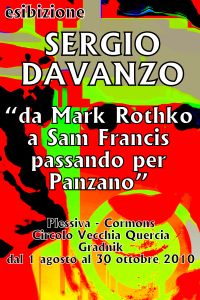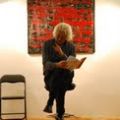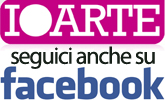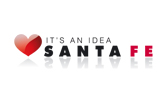"da rothko a sam francis passando per panzano"
 Segnalato da Sergio Davanzo
Segnalato da Sergio Davanzo
Categoria: Mostre
Data: dal 01 agosto 2010 al 30 ottobre 2010
Indirizzo: Plessiva - Cormons "Circolo Vecchia Quercia" - Gradnik
Provincia: Gorizia
Orario di apertura: 14 - 24 tutti i giorni
Come arrivare: strada da Cormons ad ex Confine di Stato con la Slovenia (Ultima casa in Italia)
Sito internet: www.circololavecchiaquercia.it/sito/doku.php
Referente: Sergio Davanzo
Per informazioni: 349 6494454
E-mail: sergio.davanzo46@gmail.com
Da Rothko a Sam Francis passando per Panzano
"... La progressione dell'opera di un pittore, mentre procede da un punto all'altro nel tempo, sarà diretta verso la chiarezza, verso l'eliminazione di qualunque ostacolo tra il pittore e l'idea, e tra l'idea e l'osservatore..."
(Mark Rothko)
Influenzato dalla pittura color-field, Sam Francis lavora su fondi bianchi, sui quali applica macchie di colore sfumate lasciate libere di scorrere, racchiudere o liberare lo spazio vergine.
Questa mia esibizione si sviluppa tra i due modi “sentire” la pittura. Quello di Rothko e Sam Francis avendo coscienza di essere nato e cresciuto in un rione operaio del nord est: Panzano.
Sergio Davanzo
Segnala errore
Cerca eventi
Commenti:
Markus Rotkowičs, noto come Mark Rothko (Daugavpils, 25 settembre 1903 – New York, 25 febbraio 1970), è stato un pittore statunitense, spesso classificato come espressionista astratto (anche se lo stesso Rothko ha soventemente smentito questa affermazione).
Nel 1913 lasciò la terra natale per trasferirsi con la famiglia a Portland, in Oregon (Stati Uniti d'America). Tra il 1921 e il 1923 frequentò l'università di Yale, a New Haven, nel Connecticut. L'anno successivo abbandonò gli studi per trasferirsi a New York e nel 1925 studiò con Max Weber all'Art Students League.
La sua prima esposizione risale al 1928 presso una collettiva alle Opportunity Galleries di New York. Negli anni seguenti allacciò una profonda amicizia con altri grandi artisti del calibro di Milton Avery e Adolf Gottlieb. Nel 1933 tornò a Portland per organizzare la sua prima personale, a cui seguì lo stesso anno un'altra personale a New York, presso la Contemporary Arts Gallery.
Nel 1935 fu uno dei fondatori del gruppo The Ten, rivolto soprattutto a ricerche nell'ambito dell'astrazione e dell'espressionismo. Tra il 1936 e il 1937 dipinse su cavalletto per il Federal Art Project e conobbe Barnett Newman. Cominciò una stretta collaborazione con Gottlieb, sviluppando uno stile pittorico dal contenuto mitologico, figure piatte e derivate dal linguaggio artistico primitivo. Intorno al 1945 avvicinò il suo stile alle tecniche e alle immagini del surrealismo e, grazie a Peggy Guggenheim, poté allestire una personale alla galleria Art of This Century di New York.
Il suo lavoro si concentrò sulle emozioni di base, spesso riempendo grandi tele di canapa con pochi colori intensi e solo piccoli dettagli immediatamente comprensibili. Per questo può anche essere considerato precursore dei pittori color field (vedi: Helen Frankenthaler). È infatti tra la fine degli anni '40 e l'inizio degli anni cinquanta che sviluppa il suo stile della maturità. Luminosi rettangoli colorati sembrano stagliarsi sulla tela librandosi al di sopra della sua superficie. Tuttavia Rothko rimase semisconosciuto sino al 1960, sostenendosi insegnando arte, prima presso il Brooklyn Jewish Academy Centre e poi alla California School of Fine Arts di San Francisco. In seguito collaborò con William Baziotes, David Hare e Robert Motherwell alla fondazione The Subjects of the Artist a New York. In questi anni strinse a New York amicizia con il pittore italiano Toti Scialoja.
Nel 1958 Philip Johnson commissionò a Rothko di dipingere una serie di murales per il ristorante Four Seasons nel Seagram Building di New York, un progetto su cui lavorò per più di un anno.
Una volta ultimato, Rothko non fu felice di vedere le sue pitture come sfondo ad una sala da pranzo, quindi ne consegnò nove di quelle marroni e nere alla Tate Gallery, dov'è tuttora presente un'istallazione permanente progettata dallo stesso Rothko. Nel 1967 collaborò nuovamente con l'architetto Philip Johnson ad una pittura murale per una chiesa di Houston, in Texas, realizzando quattordici lavori a tema per un'istallazione ambientale. Numerosi altri lavori di Rothko sono sparsi in giro per il mondo in altrettanti importanti musei.
Dopo una lunga lotta contro la depressione, il 25 febbraio 1970 si suicidò tagliandosi le vene nel suo studio di New York. L'anno successivo venne inaugurata a Houston la Rothko Chapel nella chiesa in cui aveva esposto l'installazione a tema ambientale nel 1967. A seguito della sua morte la determinazione della sua eredità divenne il soggetto di un famoso caso giudiziario.
La fortuna di critica e di pubblico di Rothko è cresciuta senza sosta sino a farlo divenire negli anni 2000 uno degli artisti più costosi al mondo. Un suo quadro, White Center (Yellow, Pink and Lavender on Rose) è stato venduto nel maggio 2007 da Sotheby's di New York per la cifra record di 72,84 milioni di dollari, andando più che a triplicare il precedente record dell'artista, stabilito nel novembre 2005 da Christie's di New York con Homage to Matisse venduto per 22,41 milioni di dollari.
Sam Francis (1923-1994)
Considered one of the premier colorists of the twentieth century, Sam Francis is best known for dramatic, lushly painted works comprised of vivid pools of color, thinly applied. Drips, gestures, and splatters of paint in his work have led many critics to identify him as a second-generation Abstract Expressionist, but Francis has also been compared to Color Field artists on the basis of large, fluid sections of paint that seem to extend beyond the confines of the pictorial surface. In 1964, the influential art critic Clement Greenberg included Francis in his celebrated exhibition Post-Painterly Abstraction at the Los Angeles County Museum of Art. In the catalogue, Greenberg described Post-Painterly Abstraction as both being related to and distinct from Abstract Expressionism. Greenberg wrote, “By contrast with the interweaving of light and dark gradations in the typical Abstract Expressionist picture, all the artists in this show move towards a physical openness of design, or towards linear clarity, or towards both.”Francis was born in San Mateo, California, in 1923. He originally studied medicine and psychology at the University of California at Berkeley, before serving in the U.S. Air Force. During a lengthy hospital confinement as a result of spinal tuberculosis, Francis began painting. After his release, he continued to study painting, first with David Park at the California School of Fine Arts in San Francisco and then at U.C. Berkeley, where he majored in art and eventually earned both a B.A. and an M.A. During the late 1940s, he began producing and exhibiting his earliest abstract paintings. Francis was initially influenced by the work of the Abstract Expressionists, and he incorporated many of their techniques and ideas in his work. Despite this influence, Francis’s art was also in close dialogue with modern and contemporary French art. His references ranged from the Water Lilies of Claude Monet, which inspired many of Francis’s idea about atmosphere and space, to Pierre Bonnard and Henri Matisse, whose conceptions of pure color were particularly resonant.
Launching what would turn out to be a decade of travel abroad, Francis left California for Paris in 1950 and studied briefly at the Académie Fernand Léger. While there, he became friendly with the Canadian artist Jean-Paul Riopelle and several American artists, including Joan Mitchell, as well as more established European artists including Alberto Giacometti. Francis quickly began exhibiting his work—he participated in the 1950 Salon de Mai in Paris and as well as several group shows, including the critic Michel Tapié’s celebrated 1951 exhibition, Un Art Autre, which was shown in both Paris and London. By 1952, Francis was showing his work in several solo exhibitions and high-profile group exhibitions, such as “12 Americans” at the Museum of Modern Art (1956) and “New American Painting” (1958), both of which were curated by Dorothy Miller, and 1959 exhibitions Documenta II and the Bienal de São Paulo.
While in Paris, Francis became associated with the tâchistes (from the French word, tâche, meaning a splash or stain). Artists in this group developed a style of gestural action painting that reflected an expressive, painterly aesthetic and the artists’ desire to highlight the beauty of their materials, as opposed to portraying psychological or philosophical concerns.
In works made after the mid-1950s, Francis investigated perceptions of light and color by contrasting glowing jewel tones with large areas of white. Francis described his career-long interest in light as being “not just the play of light, but the substance of which light is made.” Francis’s depiction of the shifting effects of light and large patches of pure, glowing color recall both the effects of stained-glass windows in Gothic cathedrals and Paul Cézanne’s watercolors, in which he attempted to “draw with color.” Francis’s frequent visits to Aix-en-Provence, the town in southern France where Cézanne, mesmerized by the local light, created most of his mature works, reinforced a connection between the projects of the two artists. In Francis’s later works, he incorporated the light and colors of Southern California, where he lived almost exclusively after 1961.
During the 1950s, Francis made many extended visits to Japan, where he owned a home and a studio. Japanese calligraphy and art, particularly the Japanese use of negative space, had a profound influence on his art. White in Francis’s work does not function simply as a ground against which he applies color. Rather, the white areas are engaged in active dialogue with the colors. White visually structures the work, directing colors into patterns, while simultaneously amplifying and diminishing the intensity of the tones. Francis also incorporated the spirit and aesthetic of haboku, a Japanese style of drips and flung ink, in his paintings and prints. He employs a variety of marks, ranging from small drips dispersed across the surface, to broad horizontal and diagonal lines that appear to reference calligraphic forms.
Sam Francis died in Santa Monica on November 4, 1994.
postato da Sergio Davanzo - sabato 03 luglio 2010 alle ore 19:23
Per poter commentare gli eventi devi essere un utente di IoArte!
Se sei un utente iscritto a IoArte devi prima effettuare il login!
Altrimenti iscriviti a IoArte, l'iscrizione è veloce e completamente gratuita.









